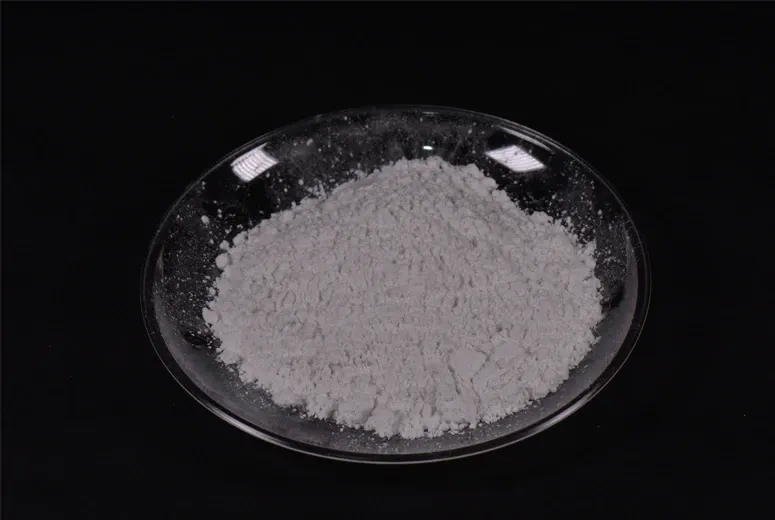Feb . 10, 2025 10:36
Back to list
Calcined Mica F-60
In the realm of arts and crafts, mica powder has long reigned supreme as a versatile ingredient, lending its shimmering beauty to everything from soap making to resin art. However, for those times when mica powder is unavailable or new effects are desired, there are several exciting substitutes that can offer similar, if not identical, results. These alternatives can be equally effective across various applications, bringing a fresh touch to your creative projects.
For crafters interested in environmentally friendly options, beetroot powder and spinach powder offer natural, vibrant color choices. While they lack the metallic shimmer of mica, they provide beautiful earthy tones that are perfect for eco-conscious projects. These natural powders are ideal for use in paper making, fabric dyeing, and other crafts where a more organic hue is desired. When it comes to resins, alcohol inks can be an intriguing substitute for mica powders. They offer vivid, transparent colors and can create stunning effects when mixed with resin, such as swirling patterns or a stained-glass appearance. Alcohol inks excel in resin art due to their fluid and blendable nature, allowing artists to achieve a multitude of creative effects. Lastly, glitter is an evergreen solution when the goal is to achieve multi-dimensional sparkle similar to mica's shine. The market offers a wide array of glitters in various sizes, shapes, and materials, including biodegradable options that address environmental concerns associated with traditional glitters. It's worth noting that glitter tends to offer a more pronounced sparkle than the subtle shimmer characteristic of mica. Hence, it’s perfect for projects where a dramatic effect is desired. Exploring these mica powder alternatives not only broadens your creative toolkit but also opens up new possibilities for experimentation across diverse mediums. By selecting the right substitute based on your project’s specific needs, you can achieve beautiful, professional-quality results that are uniquely your own. Whether aiming for vibrant splashes of color or subtle, sophisticated hues, these alternatives ensure that your artistic expression is never limited by the availability of mica powder alone.


For crafters interested in environmentally friendly options, beetroot powder and spinach powder offer natural, vibrant color choices. While they lack the metallic shimmer of mica, they provide beautiful earthy tones that are perfect for eco-conscious projects. These natural powders are ideal for use in paper making, fabric dyeing, and other crafts where a more organic hue is desired. When it comes to resins, alcohol inks can be an intriguing substitute for mica powders. They offer vivid, transparent colors and can create stunning effects when mixed with resin, such as swirling patterns or a stained-glass appearance. Alcohol inks excel in resin art due to their fluid and blendable nature, allowing artists to achieve a multitude of creative effects. Lastly, glitter is an evergreen solution when the goal is to achieve multi-dimensional sparkle similar to mica's shine. The market offers a wide array of glitters in various sizes, shapes, and materials, including biodegradable options that address environmental concerns associated with traditional glitters. It's worth noting that glitter tends to offer a more pronounced sparkle than the subtle shimmer characteristic of mica. Hence, it’s perfect for projects where a dramatic effect is desired. Exploring these mica powder alternatives not only broadens your creative toolkit but also opens up new possibilities for experimentation across diverse mediums. By selecting the right substitute based on your project’s specific needs, you can achieve beautiful, professional-quality results that are uniquely your own. Whether aiming for vibrant splashes of color or subtle, sophisticated hues, these alternatives ensure that your artistic expression is never limited by the availability of mica powder alone.
Next:
Latest news
-
Transforming Surfaces with Mica-Enhanced Paints in Coatings and DecorationNewsJul.02,2025
-
The Ultimate Guide to Mica-Based Luminous Colors with Pearlescent PigmentNewsJul.02,2025
-
The Critical Role of Mica in Industrial Applications in Welding and Oil FieldsNewsJul.02,2025
-
Revolutionizing Automotive Aesthetics with Modified Plastics Pearlescent PigmentsNewsJul.02,2025
-
The Secret with Mica Powder for Cosmetics Behind Radiant, Natural MakeupNewsJul.02,2025
-
Enhancing Performance in Polymer Applications with Mica Powder for RubberNewsJul.02,2025
Products categories









